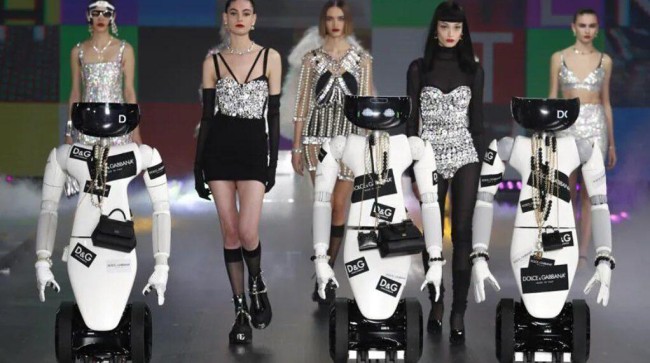The fashion industry has seen a dramatic shift in recent years due to the increasing influence of technology trends. Through the use of advanced digital technologies and fashion designers are now able to create revolutionary designs that would have been impossible before.
Moreover, tech trends have also enabled brands to reach out directly to customers through social media platforms like Instagram or Snapchat – allowing them access to valuable data on consumer preferences which they can then use when creating new collections or marketing campaigns.
Ultimately this increased connectivity between brands and customers is helping make the fashion industry more accessible than ever before while providing tangible benefits both for businesses as well as consumers alike!
Down below we will outline these influences and changes more specifically. After that, you can see how technologies can influence this massive industry in the near future.

1. AI
AI has enabled fashion designers to create clothing that is more personalized, efficient, and cost-effective than ever before. It also enables designers to quickly prototype new designs, test them on virtual models or simulate different fabrics and colors with 3D printing technology.
Additionally, AI helps reduce production costs by automating mundane tasks such as pattern cutting or fabric selection while providing valuable insights about customers’ preferences through data analysis tools like predictive analytics algorithms which allow brands to identify what sells best in their market segmentation strategies faster than ever before.
Overall, the positive impact of integrating artificial intelligence into the fashion industry is undeniable. It allows companies greater flexibility when creating collections tailored specifically towards their target audience while improving efficiency throughout all stages of production – from design conception right through manufacturing delivery timescales – ultimately resulting in higher profits for businesses worldwide!
2. Mobile Commerce
Mobile commerce has revolutionized the fashion industry, making it easier than ever for customers to shop and browse through different collections.
Consumers can now access an entire world of fashion from their smartphones or tablets, with features such as personalization and customization allowing them to tailor their shopping experience.
Mobile commerce also allows brands to reach a wider audience by utilizing social media platforms like Instagram and Pinterest in order to promote products directly.
Additionally, mobile payment options make it simpler for consumers to purchase items on the go without having cash or cards on hand. This has enabled businesses within the fashion industry not only to increase sales but also to build loyalty among their customers due to its convenience factor which ultimately leads to higher customer satisfaction rates overall.
3. 3D Printing
3D printing has revolutionized the fashion industry in many ways. It has made it easier and more affordable for designers to create complex designs with intricate details that would have been impossible to achieve through traditional manufacturing methods.
Additionally, 3D-printed fabrics are becoming increasingly popular as they offer unique textures and patterns that can be used in a variety of clothing items such as dresses, jackets, and accessories.
Finally, 3D printing is helping reduce waste by enabling brands to produce smaller batches at lower costs while still maintaining quality standards. All these factors make it clear that 3D printing is having an immense impact on the fashion industry today!
4. loT
The advent of the Internet of Things has revolutionized the fashion industry in a number of ways. By connecting devices, systems, and people through networks, IoT enables companies to collect data from customers in real-time and use it to make better decisions.
Additionally, IoT-based technologies such as RFID tags can be used for inventory management which helps reduce costs associated with storage or lost items.
Finally by providing access to previously inaccessible markets via mobile applications or virtual stores retailers are able to reach new audiences more quickly than ever before.
In short, the IoT network is transforming how businesses operate within the fashion industry making them smarter and more efficient than ever before!

5. Virtual Reality
With VR, customers can now explore a variety of clothing options in an immersive 3D environment. This allows them to get a better idea of what they’re buying before making their purchase, which increases customer satisfaction levels overall.
Metaverse networks have enabled fashion designers to create digital versions of their products that can be tested virtually without ever having to produce physical samples or prototypes – helping cut costs while still allowing them access to up-to-date trends quickly and easily.
All in all, it is clear that virtual reality technology has had a major impact on how services are delivered within the fashion industry – providing cost savings as well as more engaging experiences for both customers and businesses alike!
6. Blockchain
Blockchain technology is revolutionizing the fashion industry, allowing for greater transparency and traceability of products. By leveraging smart contracts and distributed ledgers, companies can now track their inventory from production to delivery with unprecedented accuracy.
Additionally, blockchain-based solutions are being explored as a way to facilitate payments within the fashion industry by reducing transaction costs and improving security measures against fraud or theft.
Ultimately, these trends are helping drive innovation in an already rapidly changing retail commerce sector.
